
I have my own thoughts on the pack, but since I'm a medical professional thought these may be slightly biased. I therefore took the pack to a mountain first aid course I was instructing, and asked for my students' views, both before and after the course. This review is a combination of my opinions and contributions from students.
Contents of Lifesystems Mountain First Aid Kit
- 16 Ibuprofen
- 16 Paracetamol
- 2 x medium Compeed
- 3 small Steristrips
- 3 small melolin type dressings
- 1 medium melolin type dressing
- Plaster tape
- Assorted plasters
- Paramedic shears
- 12hr orange cyalume lightstick
- Small roll of gaffa tape
- 2 12x12 cm bandage/pad dressings
- 2 open weave bandages
- 2 crepe bandages
- 8 alcohol free wipes
- Tempadot style thermometer
- Small zinc oxide tape
- Small micropore tape
- Small burn gel sachet
- Tweezers
- Small blunt ended scissors
- Safety pins
- Gloves
- Info sheet
First impressions were that the pack appeared well organised. Sections are see-through and labelled 'medication', 'bleeding', 'breaks/sprains' and 'accessories'. Lifesystems obviously appreciate that in the heat of the moment and panic, it's all too easy to fumble about with a pack while your mate's in trouble, and I think the labelling is a good idea.
Also inspired are the inclusion of gaffa tape, which we all know has a multitude of uses, and a lightstick. We discussed whether a mini headtorch would be more useful, and in the end agreed with Lifesystem's choice, since batteries can corrode or fail for a multitude of reasons and an emergency lightstick is pretty failsafe. So far so good – this pack seems designed by hillgoers for hillgoers.
"So far so good – this pack seems designed by hillgoers for hillgoers..."
However, I felt the designers of the pack had a few Jekyll and Hyde moments. For every genius brainwave idea, there seemed some pointless inclusions. The zip pulls are not big enough to be easily used in winter with big gloves and the zip itself could be sturdier. Given that people will be discouraged from carrying a first aid kit if it adds too much bulk and weight to their pack, I felt there didn't need to be both paramedic tuffcut shears and scissors included. I've happily trimmed toenails with my tuffcuts, and can't see the need to double up on cutting instruments.
An info sheet is a good idea, but it's written in tiny font - not ideal for limited light and stressful emergency situations. Info on pre-trip vaccinations, insurance and sexually transmitted diseases doesn't seem relevant for this kind of first aid kit, and the directions for CPR don't correlate with those issued by the UK Resuscitation Council for non-professionals. I don't think the advice not to give food or drink to a casualty is appropriate in a remote setting with risk of hypothermia, and it contradicts Wilderness Medical Society practice guidelines. More useful would be a small set of cards in larger fonts with VERY simple algorithms for CPR, choking etc.
I felt it was fine to include analgesia since this pack is NOT designed for leader use, but including the cardboard packets seemed to me to add unnecessary bulk. Of course they can't include everything, but as they've included paracetamol and Ibuprofen, I'd also have included aspirin (for chest pain), glucose tablets, and rehydration salt sachets. The omission of glucose and rehydration salts was picked up on by many of my students after completion of their course. If packaging is minimised, and other unnecessary items removed, no bulk or weight would be added and two more simple emergencies could be treated.
As far as dressings are concerned, we had a wide selection. Most outdoor folk adopt an improvisation approach though - does there need to be both micropore AND zinc oxide tape? - A wider, larger roll of one of these would be easier to fumble with on the hill. I see no need for open weave bandages as well as bandage/dressing combos – does it really matter if there's a dressing pad halfway through your bandage? Several bits of feedback I received advocated the inclusion of a small SAM splint, but I appreciate that the cost of the kit may then be prohibitive. Instead, I'd suggest much more gaffa tape to aid in splinting as well as any other uses that may be needed.
It's great that Compeed are included, since non mountain first aid kits would not include any. However, I would double or triple the amount, and add a few more sizes for a small group. I'd also add a large, folded sheet of cling film which could be effectively used to cover burns or large open abrasions. Cling film was another recommendation from at least half the students.
Next, the accessories. Replacing tweezers with a tick removal tool would be a brilliant move. I think Tempadot thermometers are unreliable in the outdoors, since they are hard to read, mouth temperature in the cold does not reflect core temperature, and if used in the axilla, the casualty has to be repeatedly exposed to cold to apply and remove. On a wilderness medic course I've been advised to use fridge thermometers which have long leads to the sensor – the sensor can then be placed in the axilla and display kept outside the casualty's clothes, so the first aider can continuously monitor the temperature. These may cost a bit more but are so much more useful.
Finally, the one thing that was highlighted as lacking was a small piece of waterproof paper and pencil. If this could be a casualty record card on one side, and blank paper on the other, all the better. This could act as an aide memoire for info to record (age, allergies, medical hx, medications given, basic obs etc) as well as giving the facility to note down any info needed at the time.
Summary
This may all seem very negative, but this kit is a massive improvement on many on the market, with visible, labelled contents, lightstick, gaffa tape etc. This is just a plea to Lifesystems – if you're going to go down the road of a kit for hillgoers, please, please stay on that road. Remember we improvise. Remember some of the most common hill emergencies are blisters, heat exhaustion, hypothermia, and hypoglycaemia and help us deal with them. Keep the mindset of the improvising mountaineer, and give us multi-use items that enable us to do just that! The kit is good, and with a few tweaks, could be brilliant.
Response From Lifesystems
We are always encouraged to see reviews of our products by people who use them in the field. Cara-Lyn is a very experienced professional and the reviews from knowledgeable people such as her are particularly welcome. We, at Lifesystems, pride ourselves on constant development of our products and to hear that Cara-Lyn really rates our product is great to hear. Product improvements were mentioned and we will look at all of the comments to see if we can adapt the product accordingly. Price, competition and size of pack are points we have to consider at all times, but any feedback is always considered. To take some particular points in turn:
- Zip pulls could be bigger/sturdier - We are looking into this for our bigger packs.
- Two types of scissors included – Not something we have heard before but we will do some research on this.
- Info sheet – This is constantly updated and we hope Cara-Lyn had an older version as the current sheet is, at least, correct. In terms of being small and some of the information being not relevant for mountain use, this is something we will look into.
- Cardboard packs on analgesia – To include the outer pack is, unfortunately, a MHRA requirement and there is no way around this. We are constantly trying to find smaller packets – if anyone knows of a brand that sells micro packs, please let us know.
- Adding extra medications – This can be done although, again, pack sizes are required so rehydration salts are generally in 10s so a pack of 10 has to be included. Also, the “use by” date on rehydration salts is very short which will impact on the “use by” date of the First Aid kit.
- Removing Zinc Oxide and increasing size of Micropore – We will certainly look into this.
- SAM Splint – the price is the issue here unfortunately, we can supply separately if required.
- More Compeed, more sizes – Price is a major factor on this and would push up the price of the kit. We have looked at this before, but retail margins would push up prices considerably.
- Tick remover instead of tweezers – We have some kits with tick removers and they are sold separately. We would always recommend tweezers, so hard to take out.
- Pencil are paper – Fair point, we are now working on it.
Finally, we understand that the outdoor enthusiast first aider is very improvisational and we hope that our kits do provide plenty of options to repair, mend or ease pain. However, although some improvisations are very valid and we would certainly use them ourselves, by putting them in a kit, we are stating that they are medically suitable, which can put us on dangerous ground. Putting cling film or fridge thermometers into a pack would practically be very useful, but would cause issues in terms of sterility and accuracy. On these things, we have to leave it to our customers to “add” products to their kits.
We hope our reply helps readers understand why we do what we do, but we are always willing to listen and adapt. We cannot always do everything, and sometimes cannot do anything, but as our kits are made in the UK and we will always strive to make the best kits for outdoor enthusiasts, we pride ourselves on being able to adapt pretty quickly.
Happy climbing!
Lifesystems – Surviving Adventure
About Cara-Lyn
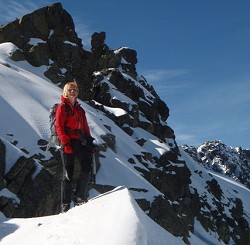

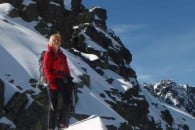

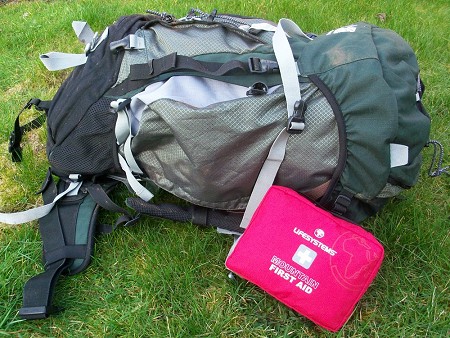


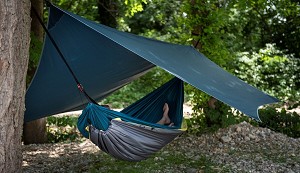
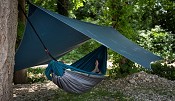


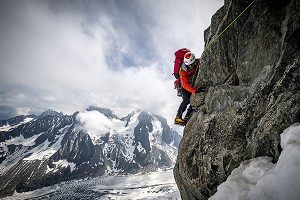

Comments